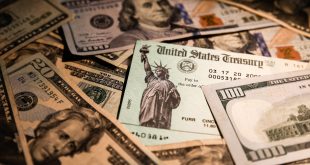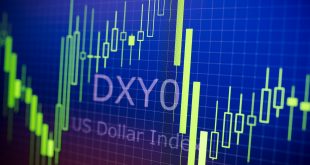Market Drivers – US Session 14/04/2023
Markets are digesting mixed signals amid a state of renewed uncertainty. Not even officials of major central banks know what to do or what they will have on their agendas next. After crucial economic data from the US, what is clear is that the economy is softening and inflation is slowing down. Another week went without a banking failure.
Key Developments
The US Dollar staged a strong recovery on Friday, trimming weekly losses. Despite the revival, the trend remains down. Expectations point to one last rate hike by the Federal Reserve (Fed) in May and a long pause, before rate cuts. The bond market sees a recession ahead and, by the end of the year, lower interest rates than the current ones.
The US Dollar Index dropped for the fifth consecutive week and posted the lowest weekly close since May. The DXY closed above 101.50, far from the lows, a positive sign for the US Dollar that does not suggest a reversal yet, but could point to a consolidation.
Next week, the S&P Global PMIs will offer the first glance of economic activity during April across the globe, an essential report in times of concerns about growth and central banks’ “data-dependence”. Growth data from China will show the extent of re-opening. The latest export data was encouraging, helping global risk sentiment.
USD/JPY finished the week little changed, with modest gains near the 133.00 area. The Japanese Yen lost strength amid risk appetite and after hopes for a turnaround in Bank of Japan’s (BoJ) monetary policy stance vanished following the first press conference of Kazuo Ueda, the new governor.
The EUR/USD pair continued to rise, as it has since late February, and this week it touched its highest point above 1.1000 in a year. Although there are some signs of weariness, the trend is still upward. The PMIs for the Eurozone released next week could have a significant impact on ECB forecasts. Markets anticipate more rate increases from the ECB, but disappointing results could alter expectations for the remainder of the year.
After falling from a multi-month high over 1.2500, the GBP/USD pair closed flat around 1.2400. The Friday decline in risk sentiment hurt the Pound, which underperformed the Euro. Since February, EUR/GBP closed at its highest weekly level above 0.8850. Next week, crucial UK data including consumer inflation and job numbers are due.
The USD/CHF exchange rate kept falling and forcefully went through 0.9000 to reach its lowest point since January 2021. The two best-performing currencies in the G10 were the Swiss Franc and the Canadian dollar. The USD/CAD pair hit its lowest point since February around 1.3300, then it recovered to 1.3400, ending the week with a loss of 140 pip. Canada will report consumer inflation on Tuesday and retail sales on Friday of the following week.
The AUD/USD was ready for a run above 0.6800, it retreated, holding in the familiar range near 0.6700. This week’s data showed strength in the labor market. The Reserve Bank of Australia (RBA) is still seen on hold at the next meeting. Next Tuesday, the central bank will release the minutes with details on the decision to pause the tightening cycle.
NZD/USD continued to retreat from the peak at 0.6378, which followed the Reserve Bank of New Zealand (RBNZ) 50 basis point rate hike, and ended near 0.6200. New Zealand’s Q1 inflation is due on Thursday.
Gold looked at record highs and blinked, retreating on Friday to $2,000. The trend is still to the upside, but the sharp correction raises doubts about the short-term bullish potential. Silver lost 2% on Friday, trimming some of its weekly gains, but still scoring the fifth advance in a row. Bitcoin gained 8% during the week and it was holding above $30,000 at the highest level since June 2022.
Economic Data
According to figures released by the US Census Bureau on Friday, retail sales in the US fell by 1% on a monthly basis to $691.7 billion in March. This report was worse than the market consensus of a decline of 0.4% and followed February’s contraction of 0.2% (updated from -0.4%). Compared to experts’ expectations of -0.3%, Retail Sales Ex-Autos decreased by 0.8% during the same period.
Consumer sentiment in the US improved modestly in early April with the University of Michigan’s (UoM) Consumer Confidence Index rising to 63.5 (preliminary) from 62 in February. This reading came in better than the market expectation of 62.
Also Read:
Wild swings in gold prices after comments by Fed officials
Despite Friday’s decline, Dow closes trading week with gains
USD/CAD’s scope to move lower based on BoC, oil prices
Will GBP be able to continue to outperform?
Friday’s stronger US dollar drags EUR/USD lower
 Noor Trends News, Technical Analysis, Educational Tools and Recommendations
Noor Trends News, Technical Analysis, Educational Tools and Recommendations





